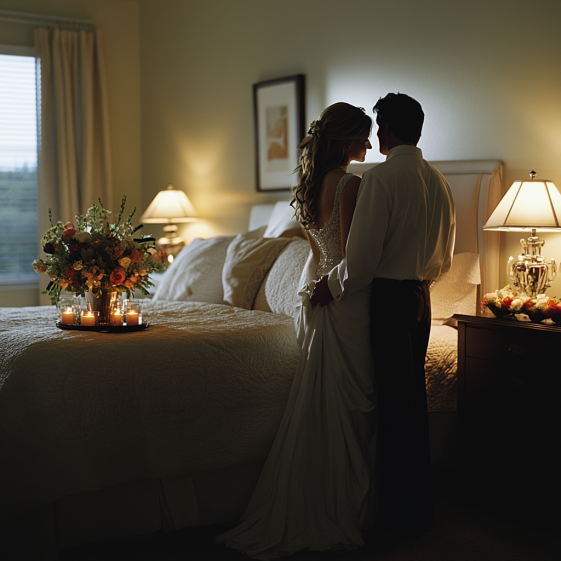Bedding Ceremony Stories: 7 Fascinating Medieval Marriage Customs
Bedding ceremony stories offer a captivating glimpse into medieval marriage customs, blending fact and folklore in rituals that once defined societal norms.
Key Takeaways
- Bedding ceremonies were integral to medieval marriages, symbolizing consummation and societal approval.
- Practices varied across regions and classes, with some involving public participation and others remaining private.
- While some aspects are rooted in truth, many stories have been embellished over time, blending history with myth.
Understanding Bedding Ceremonies
In medieval Europe, bedding ceremonies were more than festive traditions—they were powerful symbols of legitimacy, fertility, and social bonding. These rituals typically marked the formal consummation of a marriage, witnessed or at least acknowledged by members of the community or family. In an era before paper trails and legal bureaucracy, public acknowledgment held immense weight in confirming alliances and solidifying claims to inheritance or lineage.
Elements of these ceremonies varied across social classes, but some staples included processions, singing, and sometimes even bawdy jesting. The bride and groom were often ceremonially led to the bedchamber, sometimes amid laughter and teasing, where they would be “put to bed” by friends or relatives. In some cases, guests would throw stockings at the couple—a precursor to modern traditions like the bouquet toss or garter throw—believed to bring fertility and good fortune if they landed correctly.
This communal involvement created a shared investment in the couple’s success. Much like today’s wedding receptions or wedding toasts, these events provided social glue that bound together communities. In fact, the public nature of these traditions ensured transparency, accountability, and a collective sense of celebration and support.
By understanding these elaborate customs, we can better appreciate how intimacy and community were once tightly woven together. It’s a reminder that even the most private acts were once part of a deeply communal experience.

Historical Accuracy of Bedding Ceremony Stories
Over the centuries, bedding ceremony stories have taken on mythic proportions—thanks in part to literature, theater, and romantic retellings. But beneath the embellishments lies a core of truth that reveals much about the values and anxieties of the time. Historical records, especially among the nobility, frequently detail these rituals with specificity and care. The 1469 wedding of Margaret of York and Charles the Bold, for instance, included a grand procession with trumpeters and a ceremonial bedding witnessed by dozens of courtiers.
That said, commoner weddings were typically less extravagant. Their bedding ceremonies, if held at all, were modest and often private. This contrast offers insight into the stratified nature of medieval society—where one’s status determined not only the ceremony’s scale but also its necessity. Among peasants, a marriage might be validated through cohabitation and mutual acknowledgment, rather than public spectacle.
Furthermore, popular culture has played a significant role in mythologizing these events. In Geoffrey Chaucer’s The Canterbury Tales, and later in Shakespeare’s comedies, the bedding ceremony became a rich site for humor and innuendo. These literary portrayals, while entertaining, have often blurred the lines between reality and fiction.
If you’re curious about which parts of history are fact versus fiction, check out our article on medieval sleeping customs, which dives deeper into bedtime traditions from various classes and cultures.
In sum, while the core concept of the bedding ceremony was rooted in reality, the colorful accounts we hear today are often theatrical reinterpretations. Recognizing this helps us appreciate the blend of history and imagination in our understanding of the past.

Symbolism and Social Importance
Beyond the spectacle, bedding ceremony stories reveal how deeply intertwined marriage was with societal structure. These events weren’t simply about love or passion—they affirmed political unions, cemented family alliances, and reinforced social hierarchies. Especially for noble families, marriage was a strategic tool, and the bedding ceremony served as a visual contract witnessed by peers and elders alike.
The presence of witnesses ensured that the marriage could not be easily disputed. In fact, documented consummation often influenced matters like inheritance, succession, and political treaties. The bedding ceremony thus functioned as a legal and social checkpoint. To draw a modern parallel, it’s akin to today’s signed marriage license, only far more public and symbolic.
Examples abound in royal history where questions of legitimacy hinged on whether a couple was truly married in the eyes of the community. Without such public validation, claims could be contested—especially where property or dynastic rule was concerned.
Today’s symbolic acts—like lighting unity candles or dancing a first waltz—mirror the communal and affirming nature of bedding ceremonies. These moments are less about legal proof and more about shared acknowledgment of a couple’s union.
For more on symbolic rituals in the modern bedroom, browse our wedding night essentials guide or learn about romantic bedroom ideas that build lasting bonds.

Bedding ceremony stories offer a captivating glimpse into medieval marriage customs, blending fact and folklore in rituals that once defined societal norms. By understanding these traditions, we gain insight into the communal nature of marriage in the past and how it has shaped modern practices.
FAQ
- What was the purpose of medieval bedding ceremonies?
- Bedding ceremonies served to publicly acknowledge the consummation of a marriage, thereby legitimizing the union in the eyes of the community and ensuring social and legal recognition.
- Did all social classes participate in bedding ceremonies?
- While nobility often had elaborate bedding ceremonies, commoners’ practices varied, with some opting for private acknowledgments or simpler rituals, depending on regional customs and social norms.
- Are any modern wedding traditions derived from bedding ceremonies?
- Yes, traditions like the garter toss and bouquet throw have roots in medieval customs, such as guests throwing stockings at the couple during the bedding ceremony to predict future marriages.
- Were bedding ceremonies legally binding?
- In many cases, especially among the nobility, the public nature of the bedding ceremony served as a legal affirmation of the marriage, impacting inheritance rights and social standing.
- How have perceptions of bedding ceremonies changed over time?
- Modern perspectives often view bedding ceremonies as intrusive, but historically, they were integral to the communal validation of marriage, reflecting the societal values of the time.
Related Posts
- Discover the Beautiful Variations of Shams for Every Style
- Adjustable Beds for Every Age: Smart Sleep Solutions for Kids, Teens, and Seniors
- Bed Sham Comfort Guide: Enhance Your Bedding with Style and Relaxation
- Types of Beds and Bed Features
- The Ultimate Guide to Choosing the Best Bed Frames: Explore Different Types with Cozy Bed Quarters
- Guided Meditation for Children: A Powerful Tool for Calming Anxiety and Promoting Emotional Well-being
- 7 Powerful Ways to Clean Pee Mattress No Baking Soda
- Cozy Bedding Materials: Your Guide to Picking the Perfect Sheets and Blankets













